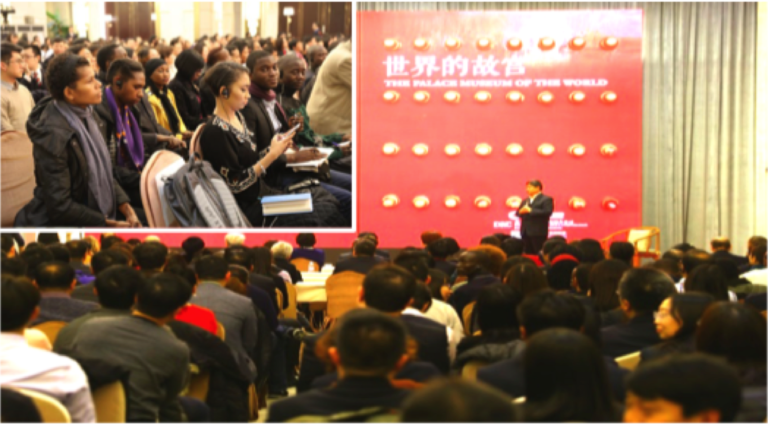By Joseph S. Margai in Beijing, China
The Director of the Palace Museum in China, Shan Jixiang, has revealed that in 2017, they received sixteen million (16m) people who visited the museum which is the highest they have recorded in recent years.
Dr. Shan Jixiang was delivering a lecture on the Chinese culture on the topic: “Imperial Palace Under The Global Perspective” recently at the Liangmaqiao Diplomatic Office Building. He said the museum has the largest number of visitors every year from across the world.
He said there are lots of collections at the museum that give people rich cultural experience and memories, adding that over his seven years leadership as director of the museum, he and his team have changed lots of things to make the museum a convenient and better place for all and sundry.
“Previously, people used to stand in queues for hours to buy tickets in order to access the museum, but having employed 30 officers to sell tickets at the museum, visitors can now do so within three minutes,” he said.
Dr. Jixiang revealed that there was no chairs around the trees for visitors as they were sitting on the ground under the trees when they visited the museum, but they have provided 56 rounds of chairs around 56 trees that could accommodate over 1,000 visitors.
“We wanted to ensure the convenience of our visitors so we have banned the parking of cars in the opening areas of the museum. We have installed 512 signs in the museum to tell people where the bathrooms, crossroads, among others, are situated. We have also increased the number of lady’s bathrooms. We have increased customer’s experience,” he said.
According to him, inside the museum, they have improved on 1,500 chairs to make them more comfortable for 11,000 visitors, adding that the entire place is now very clean as garbage could be removed within two minutes whenever someone dropped it.
Director Jixiang recalled that visitors used to complain that inside the museum was very dark, but they have installed lights, which rays cannot have any adverse effects on the over 100-year-old wooden artifacts in the museum.
He said the Forbidden City was built in 1420 and they have done a lot to ensure that it original color and other things are not changed.
“We have paved the road leading to the Forbidden City with flower gardens that are surrounded by steel railings. We have lots of flowers and varieties of fruits planted at the city,” he said.
He said the Palace Museum is currently having 80,000 visitors every day, and they were afraid of stampede but for 92 years now, there had been no stampede because of the modalities he and his predecessors had put in place.
Director Shan Jixiang told the audience comprising journalists from various countries, diplomats, Chinese citizens, among others, that 60 percent of visitors have now been buying tickets online to visit the museum instead of queuing to buy at the booths in the museum. He added that there are workers who are teaching visitors how to buy tickets online instead of buying at the museum’s offices.
“We are restoring some ancient buildings and artifacts but they need restoration techniques so that they could not be changed from their original status. A 300-year-old clock had also been restored,” he told the audience.
Currently, there are 1,684,490 artifacts in the Palace Museum, as are 361-meter long hospital artifacts.
A representative of diplomats, who was asked to speak on behalf of his colleagues, thanked Director Shan Jixiang and team for the good work they are doing to keep the Palace Museum alive.

